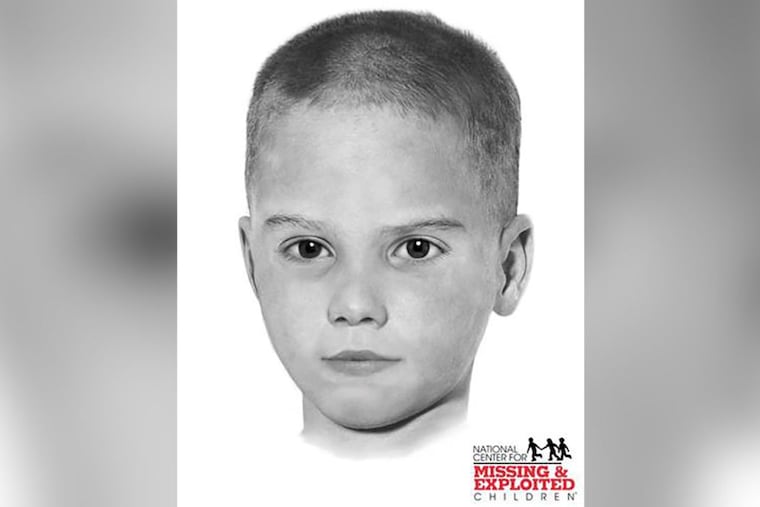‘Boy in the Box’ case brings hope DNA could help identify Philadelphia’s hundreds of nameless dead
Philadelphia's 226 anonymous dead include 23 homicide victims and what investigators believe could be more than a dozen children.

The forensic DNA technology used to identify Philadelphia’s “Boy in the Box” could be critical to finding the names of hundreds of Philadelphia’s anonymous dead dating as far back as 1955.
Philadelphia has 226 unidentified dead people, including 23 homicide victims and 16 likely children, according to a federal database of missing and unidentified Americans.
» READ MORE: After nearly 66 years and thanks to DNA advances, Philly’s ‘Boy in the Box’ has a name: Joseph
In some cases, not only is the person unidentified, but the cause of death also couldn’t be determined.
“Some could end up being changed to reflect that they’re homicides, depending on what the medical examiner finds,” said Philadelphia Police Capt. Jason Smith.
Police and Philadelphia Medical Examiner’s Office staff now meet weekly to determine which cases could benefit from a new look, said Constance DiAngelo, Philadelphia’s medical examiner, in her first interview since authorities last week disclosed that the victim in a famous cold case long known as the “Boy in the Box” was Joseph Augustus Zarelli.
“It’s really just to give them back their name, give them back the dignity and respect all of us deserve as humans,” DiAngelo said. “If there are families that are out there that are looking for them, they know where they are and what happened to them.”
Philly’s anonymous dead
Police identified the “Boy in the Box,” found dead in 1957, with forensic genealogy, a technology that uses the victim’s DNA to identify living relatives.
The success with that case prompted the working group of police and medical examiner’s investigators to look at how forensic genealogy, along with other types of DNA identification, could be brought to bear on other unidentified Philadelphians. While solving homicides is a priority, many of the unnamed dead perished in accidents, people with dementia who wander from home, suicides, or overdoses.
“Maybe they were estranged from their family and the family doesn’t really know that they’re dead,” DiAngelo said.
The police and medical examiner’s working group will also review some unsolved sex assaults.
Philadelphia has the fourth-largest number of unidentified dead people among big American cities, behind New York, Los Angeles, and Houston, according to the National Institute of Justice’s National Missing and Unidentified Persons System (NamUs).
The person who has been on the tally of unidentified dead the longest is an older woman found in a black-and-white short coat, green dress, and black slip who apparently fell down a flight of stairs in a home the day after Christmas in 1955.
Most recently, a man was found Nov. 17 in a burning car, his body charred beyond recognition. One potential identifier — he had a plate on the right side of his jaw.
The city’s unknown dead include people pulled from the Delaware River or the Schuylkill; found in abandoned buildings; another long-unsolved child death, the “Girl in the Box”; and another victim, probably a teenager, whose bones were found in a bag by a Philadelphia Water Department worker while cleaning a sewer drain in 1979. Her skull showed signs of injuries.
» READ MORE: Philly’s Girl in the Box remains an overlooked mystery
Philadelphia has reported 15 unidentified dead so far this year, compared with two 2021 deaths that are still unidentified and four from 2020, according to NamUs.
Obstacles persist
While DNA evidence could provide a meaningful boost, much of the work of identifying the dead typically involves low-tech solutions like fingerprinting, dental records, or information revealed through X-rays. DNA samples typically weren’t preserved until about 20 to 30 years ago, DiAngelo said.
Older cases may require bodies be exhumed with the hope that usable DNA can be salvaged. There’s no guarantee even of that, said Thomas McAndrew, a former Pennsylvania State Police investigator who now runs a nonprofit dedicated to finding funding to identify anonymous dead.
“A lot of those cases, they were just being put right into the ground in body bags or really cheap-construction wooden coffins,” he said.
Gathering DNA evidence is also expensive. Depending on the circumstances, an exhumation can cost between $5,000 and $10,000, McAndrew said. Extracting DNA from a bone, for example, and submitting it to a publicly accessible DNA database can cost between $6,000 and $8,000.
“They don’t have money for a 60-year-old murder to do whatever they think should be done,” McAndrew said of the Philadelphia Police Department.
He has been in discussions with Philadelphia about finding funding, he said. DiAngelo said the police are seeking grants to help support investigations into unidentified dead.
The cost makes collaborating with the police a necessity, said DiAngelo, acknowledging that her office doesn’t have the staff to properly handle both new unidentified victims and older cases.
DiAngelo said in an October interview that the Medical Examiner’s Office needed nine additional investigators. She has added one since then and expects additional hires in 2023.
“I definitely need more resources so that I can truly dedicate an investigator to do this,” she said.
Staff writer Lynette Hazelton contributed to this article.